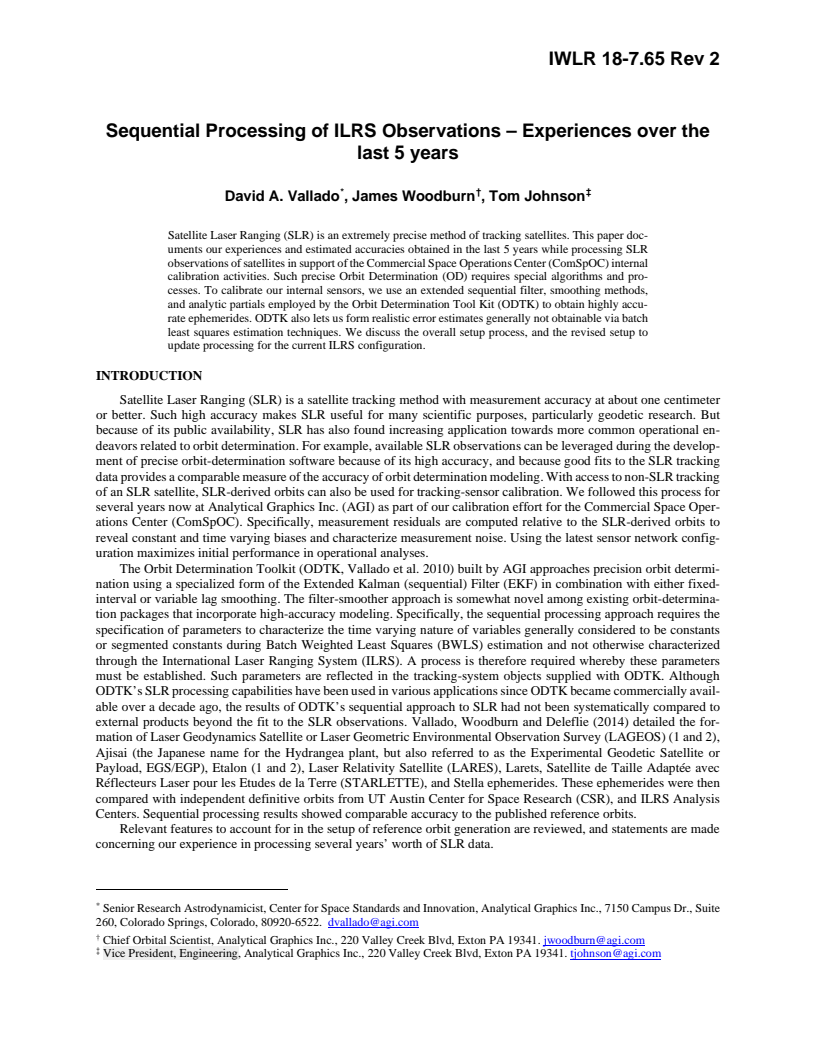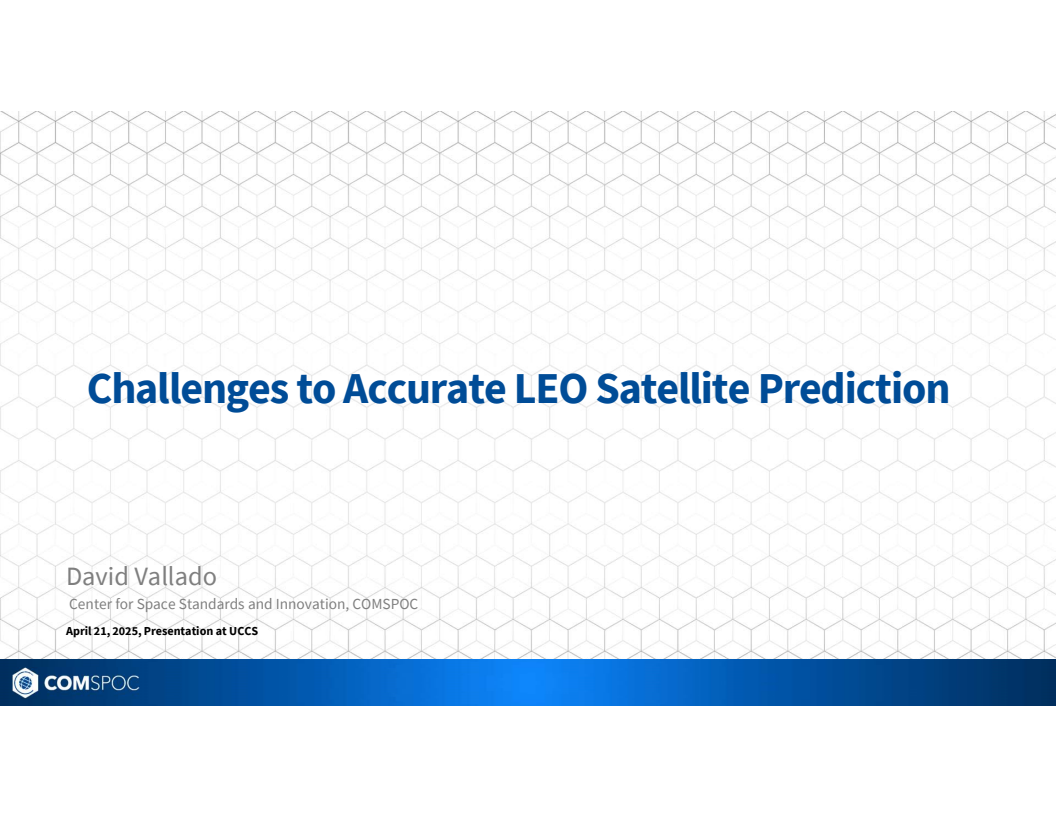Sequential Processing of ILRS Observations – Experiences over the last 5 years

Id: 302
Type: Conference paper
Published: 11/07/2018
Event: International Workshop on Satellite Laser Ranging 2018
Authors:
Click an author to filter the list of related assets below.Abstract:
Satellite Laser Ranging (SLR) is an extremely precise method of tracking satellites. This paper doc-uments our experiences and estimated accuracies obtained in the last 5 years while processing SLR observations of satellites in support of the Commercial Space Operations Center (ComSpOC) inter-nal calibration activities. Such precise Orbit Determination (OD) requires special algorithms and processes. To calibrate our internal sensors, we use an extended sequential filter, smoothing meth-ods, and analytic partials employed by the Orbit Determination Tool Kit (ODTK) to obtain highly accurate ephemerides. ODTK also lets us form realistic error estimates generally not obtainable via batch least squares estimation techniques. We discuss the overall setup process, and the revised set-up to update processing for the current ILRS configuration.
Citation:
Vallado, David A., and James Woodburn and Tom Johnson. 2018. Sequential Processing of ILRS Observations – Experiences over the last 5 years. Paper IWLR 18-7.65 presented at the 21st International Workshop on Laser Ranging conference. Canberra, Australia, November 5-9, accessible at https://comspoc.com/Resources/Content/Private/C-20220425T174842/Paper/IWLR%2018-7.65%20Sequential%20Processing%20of%20ILRS%20Observations%20-%20Experiences%20over%20the%20last%205%20years%20Final%20rev2.pdf.
Papers with related authors:

Sequential Orbit Determination Using Satellite Laser Ranging
Read More



Using Spacebook and Cesium to Promote and Enhance Flight Safety
Read More

Actionability and Persistence Of Conjunction Data
Read More

Actionability and Persistence of Conjunction Data
Read More

Practical issues with using a full gravity field
Read More
LEO satellite behavior during the May 2024 Gannon geomagnetic storm
Read More
Deep operator and SSA collaboration for space sustainability
Read More
Synthetic Covariance Production Using a New Digital Approach
Read More
Contrasting the Inflection Points and Efforts in Space Traffic Coordination and Management
Read More
Addressing the debilitating effects of maneuvers on SSA accuracy and timeliness
Read More
Actionability and Persistence of Conjunction Data
Read More
DEEP OPERATOR AND SSA COLLABORATION FOR SPACE SUSTAINABILITY
Read More

Assessing passive radar for LEO SSA
Read More

Russian ASAT Debris Cloud Evolution and Risk
Read More
Results of comprehensive STCM data fusion experiment
Read More





Debris Risk Evolution And Dispersal (DREAD) for post-fragmentation modeling
Read More

Fragmentation event debris field evolution using 3d volumetric risk assessment
Read More
Sample evaluation criteria for space traffic management systems
Read More

Application of New Debris Risk Evolution And Dissipation (DREAD) Tool to Characterize Post-Fragmentation Risk
Read More
Orbital Strategies to Mitigate the Solar Exclusion Effect on Space-Based Observation of the Geosynchronous Belt
Read More
New Consolidated Files for Earth Orientation Parameters and Space Weather Data
Read More
Updated Analytical Partials for Covariance Transformations and Optimization
Read More
Improved SSA through orbit determination of Two Line Element Sets
Read More


Evaluating Gooding Angles-only Orbit Determination of Space Based Space Surveillance Measurements
Read More
ORBIT DETERMINATION ISSUES AND RESULTS TO INCORPORATE OPTICAL MEASUREMENTS IN CONJUNCTION OPERATIONS
Read More



